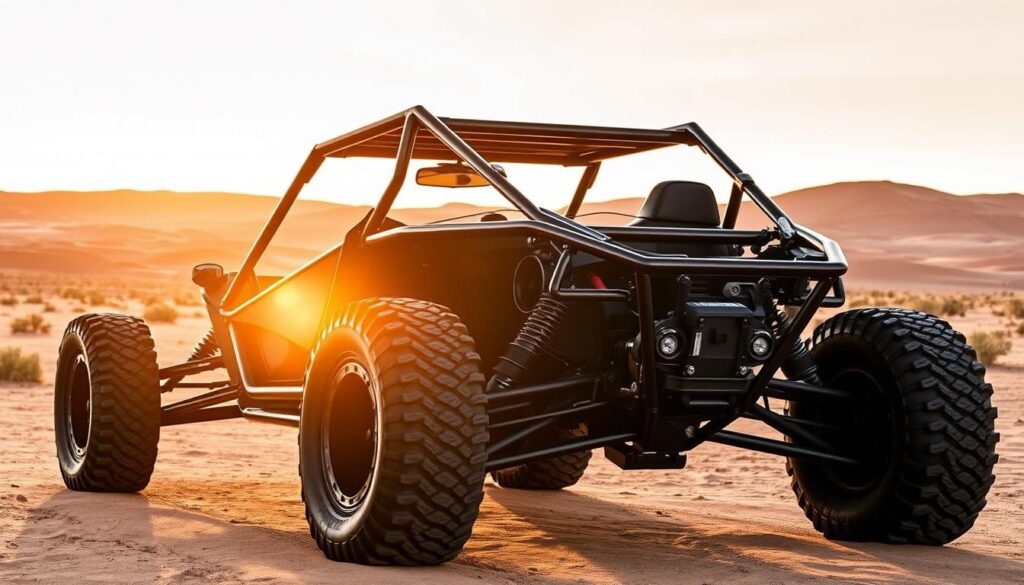As an off-road enthusiast, you’re likely aware that dune buggies represent a significant financial investment that deserves proper protection. Whether you’re a seasoned adventurer or new to the world of off-road vehicles, having the right insurance coverage is crucial for enjoying your outdoor thrills without worrying about the potential risks.
The thrill of off-road adventures comes with inherent risks, making appropriate liability insurance a necessity. I’ll guide you through the process of securing the best rail buggy insurance to protect your investment and outdoor adventures.
Key Takeaways
- Understand the unique insurance needs for your rail buggy.
- Learn about the different coverage options available.
- Discover the importance of liability coverage for off-road adventures.
- Get insights into the costs associated with rail buggy insurance.
- Find tips to help you make informed decisions about your insurance.
Understanding Rail Buggy Insurance
Off-road adventures with rail buggies can be exhilarating, but they also come with risks that insurance can mitigate.
Rail buggies and dune buggies are thrilling vehicles designed for off-road experiences. To understand the importance of insurance for these vehicles, it’s crucial to first know what they are.
What Are Rail Buggies and Dune Buggies?
Rail buggies and dune buggies are specialized off-road vehicles built for traversing challenging terrains like sand dunes and beaches.
These custom-built vehicles feature lightweight frames, powerful engines, and specialized suspension systems, making them ideal for off-road adventures.

Why Insurance Matters for Off-Road Vehicles
Insurance for rail buggies and dune buggies is crucial because they face unique risks not covered by standard auto insurance policies.
The off-road nature of these vehicles exposes them to significant risks, including rollovers and collisions, which can result in costly repairs.
The Risks of Riding Without Insurance
Riding without proper insurance exposes owners to substantial financial liability if they cause injury or damage during their off-road adventures.
Medical expenses from off-road accidents can be substantial, and without proper insurance coverage, these costs are out of pocket.
| Risks | Consequences | Insurance Coverage |
|---|---|---|
| Rollovers and Collisions | Costly Repairs | Collision Coverage |
| Injury or Damage | Financial Liability | Liability Coverage |
| Medical Expenses | Substantial Costs | Medical Coverage |
Types of Rail Buggy Insurance Coverage
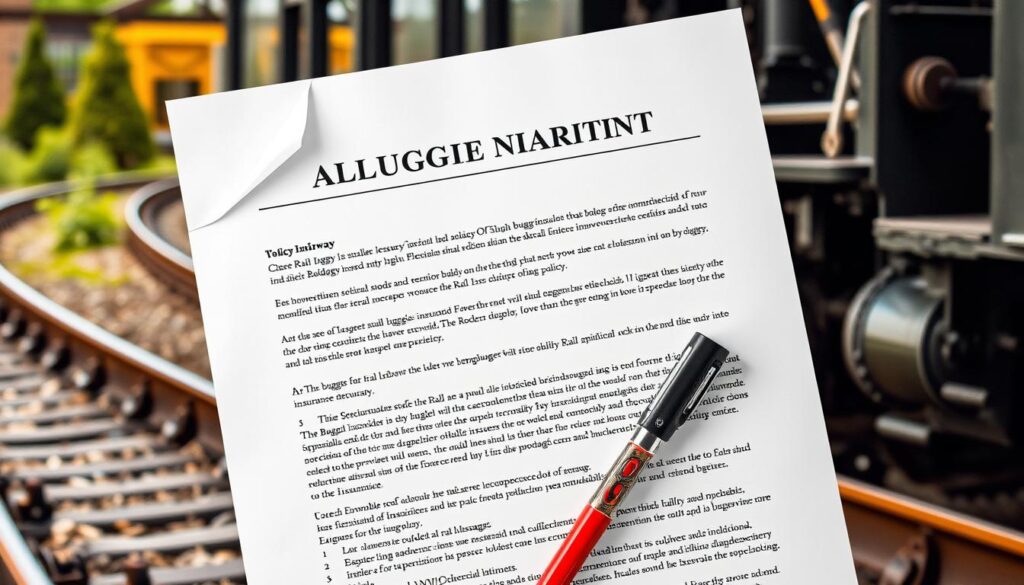
When it comes to insuring your rail buggy, understanding the various types of coverage available is crucial. Rail buggy insurance policies are designed to protect you and your vehicle from various risks associated with off-road adventures.
Liability Coverage
Liability coverage is the foundation of any rail buggy insurance policy. It protects you financially if you’re responsible for injuries to others or damage to their property while operating your vehicle. I recommend considering liability limits that adequately protect your assets, as medical bills and property damage claims can quickly escalate beyond basic coverage limits.
Comprehensive Coverage
Comprehensive coverage protects your investment against non-collision incidents such as theft, vandalism, fire, or weather-related damage. This type of coverage is particularly important if you’ve invested significantly in your rail buggy. It ensures that you’re protected against unforeseen events that could result in significant financial loss.
Collision Coverage
Collision coverage pays for repairs to your rail buggy when you’re involved in an accident, regardless of who’s at fault. This provides essential protection for your vehicle during off-road adventures, helping you get back on track quickly.
Additional Coverage Options
Beyond the basic coverage types, you can typically purchase additional coverage for things like medical costs, coverage for your gear, and custom accessories for your buggy. Insurance policies for rail buggies can often be customized with specific endorsements that address the unique ways you use your vehicle.
When comparing insurance coverage options, I advise looking beyond the premium price to understand the specific protections each policy provides for your particular riding habits and buggy value.
Is Rail Buggy Insurance Required?
The necessity of rail buggy insurance largely depends on how and where you plan to use your vehicle. While dune buggies and sand rails are typically used off-road, the insurance requirements can vary significantly based on your location and usage.
State Requirements for Off-Road Vehicles
Most states do not require insurance for vehicles used exclusively off-road on private property. However, it’s highly recommended to have buggy insurance to protect your investment and limit liability exposure. The legal requirements for rail buggy insurance vary significantly from state to state.
- The laws governing off-road vehicles differ by state, with some requiring insurance for certain types of off-road activities.
- Public lands, parks, and recreation areas often have their own insurance requirements for off-road vehicles.
Street-Legal Requirements
If you plan to drive your dune buggy on public roads, you will need to make it street legal and obtain at least the minimum liability insurance required by your state. Street-legal rail buggies must typically carry at least the minimum liability insurance required for standard automobiles.
| State | Minimum Liability Insurance | Street-Legal Requirements |
|---|---|---|
| California | $15,000/$30,000/$5,000 | Yes, with specific safety features |
| Florida | $10,000/$20,000/$10,000 | Yes, with registration |
| Texas | $30,000/$60,000/$25,000 | Yes, with inspection |
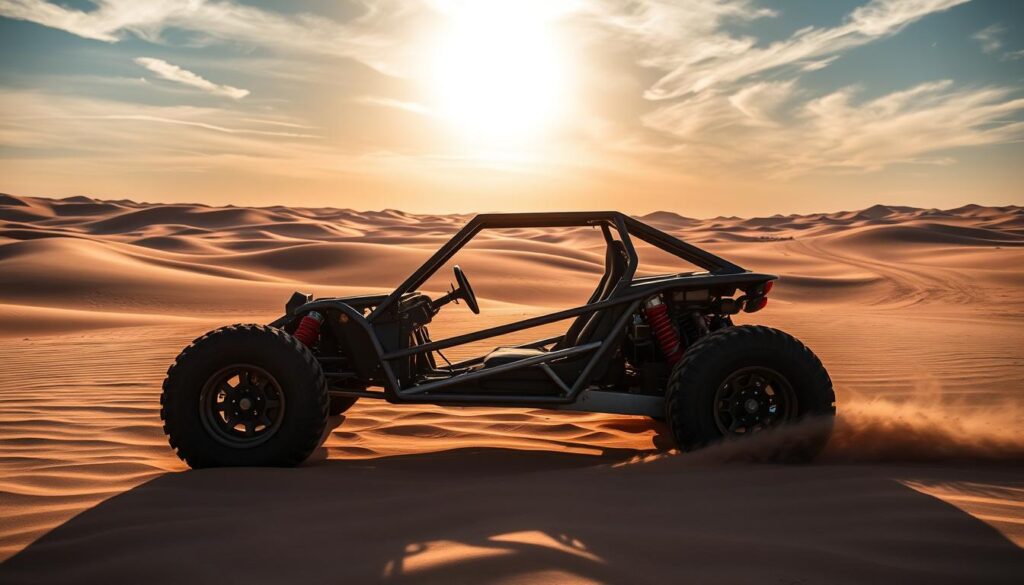
It’s also worth noting that if you finance your rail buggy purchase, your lender will likely require comprehensive insurance coverage.
Benefits of Having Rail Buggy Insurance
For those who enjoy off-roading, rail buggy insurance provides a safety net. Even if it’s not mandatory, the benefits of insurance can far outweigh the costs, offering financial protection and peace of mind.
Financial Protection for Your Investment
Rail buggy insurance is crucial for protecting your investment. Off-road vehicles can be expensive, often costing thousands or even tens of thousands of dollars. Repair costs can quickly add up after an incident, making insurance an essential safeguard against potentially budget-breaking expenses. With the right coverage, you can ensure that your financial exposure is limited, allowing you to enjoy your off-road adventures without worrying about the financial implications of an accident.
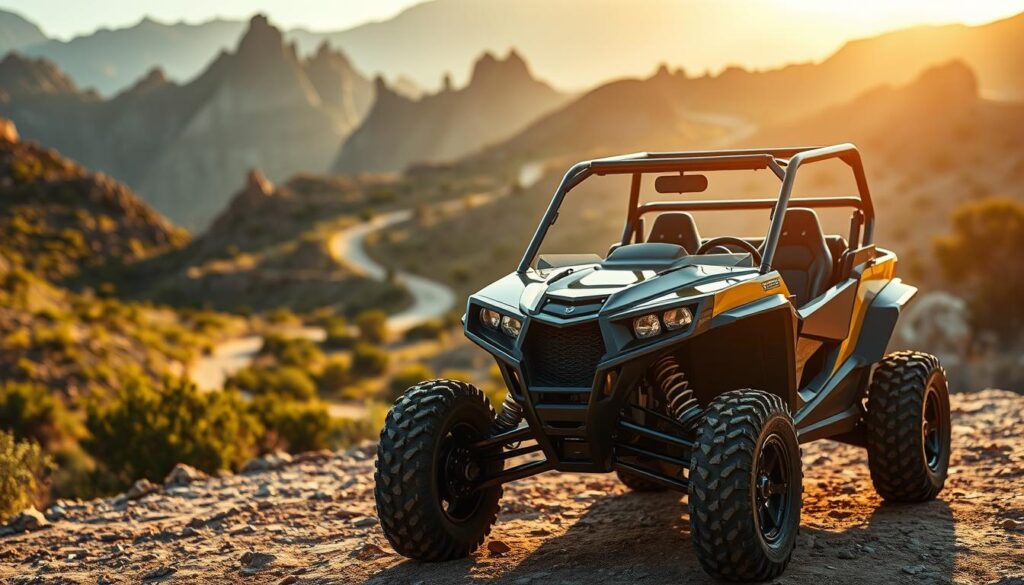
Liability Protection
Liability protection is a significant benefit of rail buggy insurance. If you’re responsible for injuries to others or property damage, you could face devastating financial consequences. Rail buggy insurance shields you from these risks, covering legal defense costs, attorney fees, and court expenses. This protection is invaluable, especially if you’re sued following an accident. By having liability coverage, you can protect your assets and financial stability.
Peace of Mind During Your Adventures
Having rail buggy insurance provides peace of mind, allowing you to fully enjoy your off-road adventures. Knowing you’re properly insured means you can ride without constant worry about financial exposure. Many policies also offer additional benefits like roadside assistance and towing coverage, which are particularly valuable when your rail buggy breaks down in remote locations.
| Benefits | Description |
|---|---|
| Financial Protection | Protects your investment against costly repairs and financial loss. |
| Liability Protection | Shields you from financial consequences of accidents causing injuries or property damage. |
| Peace of Mind | Allows you to enjoy off-road adventures without worrying about financial exposure. |
Factors Affecting Rail Buggy Insurance Costs
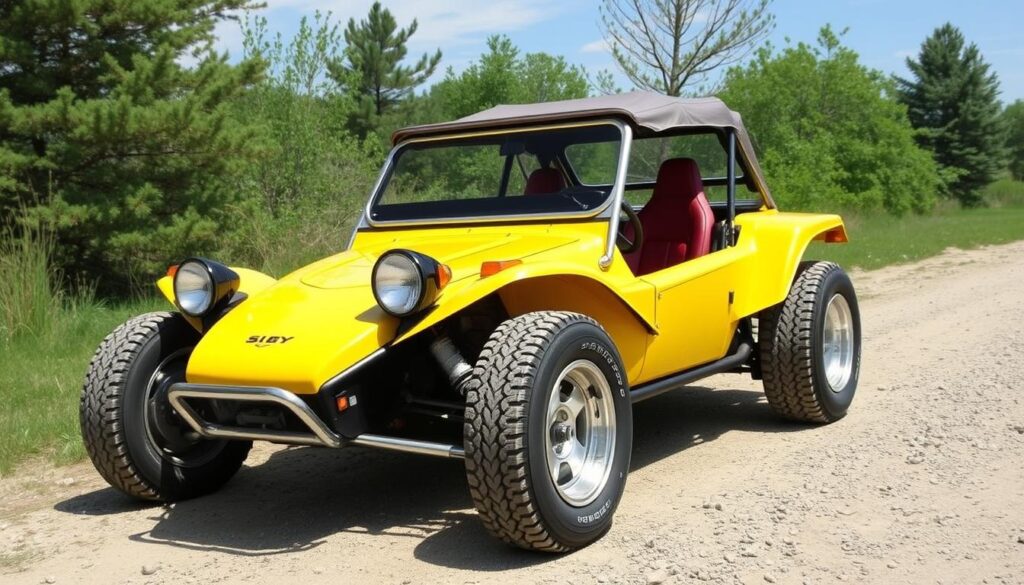
The cost of insuring a rail buggy is not arbitrary; it’s influenced by a variety of specific factors. Understanding these elements can help you navigate the insurance market more effectively and potentially lower your premiums.
Vehicle Value and Type
The value and type of your rail buggy significantly impact your insurance premiums. More expensive or high-performance vehicles typically cost more to insure due to higher replacement costs. Custom-built rail buggies, for instance, may require specialized appraisals to establish their true value for insurance purposes.
Your Driving Record and Experience
Your personal driving record and experience level play a major role in determining insurance costs. A clean record and demonstrated experience typically result in lower premiums, as they indicate a lower risk to the insurer.
Intended Use and Riding Location
The intended use of your rail buggy affects insurance rates, with recreational-only use generally costing less to insure than vehicles used for competitive racing or extreme terrain challenges. Additionally, where you primarily ride your rail buggy influences cost factors, with some locations considered higher risk.
Coverage Limits and Deductibles
Coverage limits and deductible choices directly impact your premium costs. Higher coverage limits increase premiums, while higher deductibles typically lower them. It’s essential to strike a balance that provides adequate protection without excessively raising your costs.
Age and Number of Riders
The age and number of authorized riders on your policy can significantly affect insurance costs. Younger operators or multiple drivers often result in higher premiums due to the increased risk perceived by insurers. However, some insurers offer discounts for safety features, completed safety courses, or membership in recognized off-road vehicle associations.
By understanding these factors, you can better navigate the process of insuring your rail buggy and potentially reduce your insurance costs. It’s crucial to shop around and compare quotes from different insurers to find the best coverage for your needs.
How to Make Your Rail Buggy Street Legal
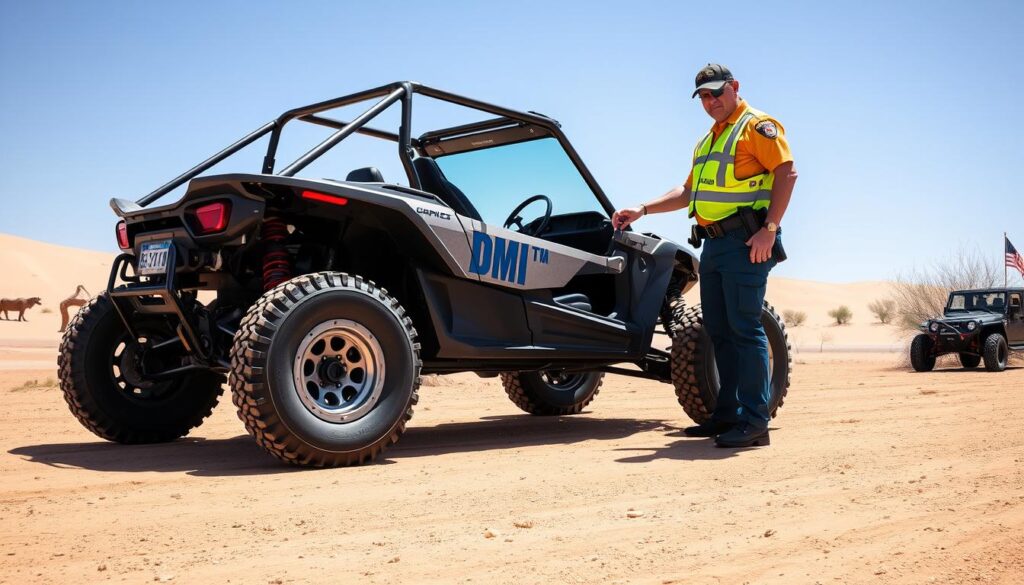
To ride your dune buggy on public roads, you’ll need to ensure it meets the necessary criteria for being street legal. This involves understanding the safety features and registration process required by your state.
Required Safety Features
Your buggy must be equipped with certain safety features to be considered street legal. These typically include DOT-approved headlights, tail lights, turn signals, mirrors, horn, windshield or eye protection, seat belts, and a properly functioning brake system. Many states also require additional equipment such as a speedometer, odometer, license plate light, parking brake, muffler meeting noise restrictions, and fenders over all wheels.
It’s essential to check your state’s specific requirements, as they can vary significantly. Installing a VIN plate is also recommended, as this is typically required for registration and helps establish the vehicle’s identity for legal purposes.
Registration and Licensing Process
The registration process for your dune buggy typically begins with a thorough vehicle inspection by your state’s department of motor vehicles or an authorized inspection station. You’ll need to provide proof of ownership, which can be challenging for home-built buggies – bill of sale documentation for major components and build receipts are often necessary.
Most states require emissions testing for street-legal vehicles, though some offer exemptions for certain categories of custom-built or specialty vehicles. The licensing process typically involves standard vehicle registration fees, title application, and possibly special off-road vehicle endorsements depending on your state’s requirements.
Finding the Right Rail Buggy Insurance Provider

Insuring your rail buggy requires identifying a provider that specializes in off-road vehicle insurance. Dune buggy or sand rail insurance is specialized, and due to the risks riders face, some insurance companies won’t provide coverage.
Specialized Insurance Companies vs. Traditional Insurers
Specialized insurance companies often provide more comprehensive coverage options tailored specifically to off-road vehicles compared to traditional auto insurers. Traditional insurance companies may offer rail buggy coverage as an add-on to existing policies, which can be convenient but might not provide the specialized protection these unique vehicles require.
Working with Independent Insurance Agents
Working with independent insurance agents can be particularly valuable when seeking rail buggy insurance, as they have access to multiple carriers and specialized markets that direct-writing agents don’t. Independent agents can compare policies from different providers to find coverage that meets your specific needs and usage patterns while offering competitive rates.
Questions to Ask When Shopping for Coverage
When shopping for coverage, I recommend asking detailed questions about exactly what is covered, exclusions, territorial limitations, and how modifications to your buggy might affect coverage. Important questions to ask include whether your policy covers off-road use, competitive events, passengers, custom parts and equipment, and what happens if your buggy is used by someone else.
Understanding how claims are handled before you need to file one is crucial – ask about the claims process, documentation requirements, and typical timeframes for resolution. Some providers offer bundling discounts when you combine your rail buggy insurance with other policies like home insurance or life insurance, potentially saving you money.
My Expert Tips for Securing the Best Rail Buggy Insurance
With years of experience in the industry, I’m sharing my top tips for obtaining the best possible rail buggy insurance coverage. To start, it’s essential to document your rail buggy thoroughly, including detailed photographs and records of all modifications and improvements. This will ensure proper valuation for insurance purposes.
Consider bundling your rail buggy insurance with other policies, such as home insurance or auto insurance, to potentially qualify for multi-policy discounts. Additionally, installing anti-theft devices and storing your rail buggy in a secure location when not in use can lead to premium discounts.
When applying for insurance, be honest about your usage patterns. Misrepresenting how you use your rail buggy could result in denied claims if an incident occurs during an undisclosed activity. It’s also crucial to review your policy annually to ensure your coverage limits still match your needs, especially after making significant upgrades or modifications.
Other valuable tips include joining rail buggy or dune buggy owners’ associations to access group insurance rates and specialized coverage options. Maintaining a clean driving record both on and off-road is also vital, as many insurers check your standard driving history when determining eligibility and rates.
When comparing quotes, look beyond the premium price to evaluate coverage limits, deductibles, exclusions, and the financial stability of the insurance company. Consider seasonal policies if you only use your rail buggy during specific times of the year. Finally, document all communication with your insurance provider in writing, especially any special accommodations or coverage agreements.
By following these expert tips, you can secure the best dune buggy insurance for your needs and enjoy your off-road adventures with peace of mind.
